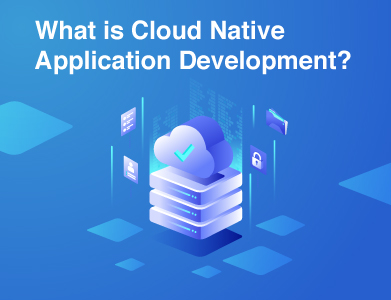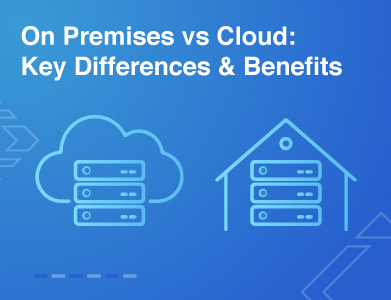It was a Monday morning, and the insurance office was already in chaos. A hailstorm over the weekend had caused a flood of claims to pour in. One adjuster was digging through outdated files to find a policy from three years ago. Another was juggling phone calls from frustrated customers demanding updates on their claims. The server in the back room, overburdened and outdated, crashed right when it was needed the most.
Customers were left waiting. Adjusters were scrambling. And the manager? Well, they were tearing their hair out trying to keep everything from falling apart.
This isn’t a one-off scenario. For many insurance companies, it’s just another day in the office. Sound familiar? If so, you’re not alone. But here’s the good news—it doesn’t have to be like this.
At Prioxis, we’ve seen firsthand how these pain points weigh down insurance businesses. That’s why we’re here to show you how Cloud-Native Insurance Software Solutions can not only save the day but also transform how your business runs.
By the time you finish this article, you’ll understand how the cloud can solve your biggest headaches, save money, and make your customers happier than ever.
What’s the Problem?
Insurance companies face a unique set of challenges. Let’s break them down:
- Claims Take Too Long Customers hate waiting. Whether it’s for a car repair reimbursement or a property damage payout, slow claims processing can damage trust and reputation.
- Data Feels Scattered Information is often spread across multiple systems or stored in physical files. Finding what you need can feel like searching for a needle in a haystack.
- IT Costs Are Out of Control Maintaining servers and dealing with hardware upgrades is expensive. Plus, when something breaks, operations grind to a halt.
- Customers Expect More People are used to quick service from tech-driven companies like Amazon and Uber. They want the same seamless experience from their insurance provider.

Why Insurers Are Slow to Change (But Why That’s Changing Fast)
Insurance is built on trust, tradition, and reliability, so it’s no surprise the industry hasn’t been quick to try new tech like the cloud. When it first showed up, the cloud felt risky—like handing over your precious data to a stranger. It’s not like switching to a new coffee brand; this is your company’s lifeblood we’re talking about.
But here’s the thing: the world’s changed. Customers expect everything instantly. They want to file claims online, get instant quotes, and manage policies from their phones. If your systems can’t keep up, your competitors will leave you in dust.
That’s where the cloud insurance comes in. It gives you the speed, flexibility, and tools to deliver what your customers want—and it saves you money while doing it.
What Is the Cloud?
The cloud insurance is basically a fancy way of saying your data, software, and systems live on the internet instead of on physical servers in your office. Think of it like Netflix: You don’t need DVDs anymore because you stream everything online. The cloud is the same idea, but for your business.
With cloud-based systems, you don’t have to worry about buying hardware, running servers, or installing updates. It’s all handled for you, which means your team can focus on the big stuff instead of putting out IT fires all day.
Cloud computing comes in three main flavors:
- Public Cloud Shared resources hosted by providers like AWS, Google Cloud, or Microsoft Azure. It’s scalable, cost-effective, and widely used for general operations.
- Private Cloud Dedicated resources for your organization, offering more control and customization but at a higher cost.
- Hybrid Cloud A mix of public and private cloud, allowing you to keep sensitive data on-premises while using the public cloud insurance for other tasks.
What Makes the Cloud So Appealing for Insurers?
1. Cost Efficiency
Maintaining legacy systems is expensive. You’ve got servers that need constant upkeep, software that requires licensing and updates, and IT teams stretched thin just keeping everything running. cloud computing insurance slashes these costs in several ways:
- Pay-As-You-Go Pricing With the cloud, you only pay for the resources you use. This is especially useful for insurers, where demand can fluctuate.
- No Hardware Costs Moving to the cloud reduces the need for expensive on-premises servers and data centers. A mid-sized insurer reported saving 35% on IT infrastructure costs within a year of switching to the cloud.
- Reduced Downtime Legacy systems often suffer from crashes and outages, leading to lost productivity and frustrated customers. Cloud providers offer 99.9% uptime guarantees, ensuring your systems stay online.
2. Improved Speed and Agility
Speed is the name of the game in today’s market. The cloud computing insurance allows insurers to:
- Launch Products Faster One insurer used cloud-based tools to roll out a new cyber insurance product in just six weeks—a process that would have taken six months on their legacy systems.
- Adjust Pricing in Real Time With cloud analytics, insurers can track market trends and adjust pricing dynamically. For example, a health insurer could lower premiums temporarily to attract new customers during open enrollment periods.
- Handle High-Volume Events When natural disasters strike, claims spike. Cloud systems can handle these surges seamlessly, ensuring customers get the support they need without delays.
3. Enhanced Customer Experiences
Today’s customers expect convenience and speed. The cloud computing insurance makes it easier to deliver both:
- Real-Time Claims Processing A large auto insurer integrated AI-powered claims processing with their cloud platform. Customers can now upload photos of vehicle damage through an app, and the system estimates repair costs within minutes.
- Self-Service Portals Policyholders can manage their accounts, update information, and even purchase add-ons through intuitive, cloud-based portals. For instance, a life insurance provider saw a 25% increase in customer satisfaction scores after launching their self-service app.
- 24/7 Support Chatbots powered by cloud AI can provide round-the-clock assistance, answering common questions or guiding customers through the claims process.
4. Stronger Data Security
Here’s the irony: One of the biggest concerns about the cloud—security—has become one of its strongest selling points. Cloud-Native Software Solutions providers invest heavily in protecting your data with:
- Encryption All data is encrypted both in transit and at rest.
- Regular Security Audits Providers continuously test their systems for vulnerabilities.
- Advanced Threat Detection AI monitors for suspicious activity, flagging potential threats before they become issues.
Example: A regional insurer in Europe faced a ransomware attack on their on-premises systems. After migrating to the cloud, their new setup included real-time backups and advanced monitoring, preventing any data loss from future threats.
5. Disaster Recovery and Business Continuity
Disasters happen—whether it’s a cyberattack, a fire, or a flood. The question is, how quickly can your business bounce back? With the cloud, your data is backed up in secure, geographically dispersed locations. This means:
- Minimal Downtime If one server goes down, another picks up the slack.
- Quick Recovery A U.S.-based property insurer was able to resume operations within hours of a major data center outage, thanks to their cloud backup systems.
Real-Life Cloud-Native Insurance Software Solutions Use Cases in Insurance
Use Case 1: Smarter Underwriting with AI
Underwriting is at the heart of insurance, but it’s traditionally been a slow, manual process. By using cloud-based AI and machine learning, insurers can analyze massive datasets in seconds. For example:
- A life insurer used AI to analyze customer health records and lifestyle data, creating more accurate risk profiles. This allowed them to offer personalized policies at competitive prices, boosting new customer acquisition by 20%.
Use Case 2: Revolutionizing Claims Management
Claims processing has long been a pain point for both insurers and customers. Cloud-Based Insurance Software Solutions are changing the game:
- A property insurer implemented a cloud-based claims system that uses drones to assess damage after natural disasters. The data is uploaded to the cloud, processed by AI, and claims are approved within hours.
Use Case 3: Streamlined Compliance
Regulatory requirements are complex and ever-changing. Cloud platforms simplify compliance by providing tools for:
- Automated Reporting An auto insurer reduced the time spent on regulatory reporting by 40% using cloud-based compliance software.
- Audit Trails All changes to data and systems are logged automatically, making audits a breeze.
Use Case 4: Personalized Customer Engagement
Customers expect insurers to know them and cater to their needs. With cloud analytics, this is easier than ever:
- A health insurer analyzed claims data to find customers who might receive help from wellness programs. They sent personalized recommendations, leading to a 15% increase in program sign-ups and healthier customers.
What’s Holding Some Insurers Back?
If the Cloud-Native Insurance Software Solutions are so great, why isn’t everyone on board? Here are a few common concerns—and why they don’t have to be deal-breakers.
1. Integration with Legacy Systems
A lot of insurers are still running on old-school systems that have been in place for decades. The idea of trying to connect those to a shiny new cloud platform sounds like a nightmare. But the truth is, integration isn’t as scary as it sounds. With the right planning and support, it’s totally doable.
2. Resistance to Change
People don’t like change. Your team might be comfortable with the tools they’ve been using for years, even if those tools are clunky and inefficient. The key here is communication and training. Show your team how the Cloud-Native Insurance Software Solutions will make their jobs easier, not harder, and they’ll be more willing to embrace it.
3. Fear of Losing Control
Some companies worry about handing over their data to a third party. But reputable cloud providers give you full control over who can access your data and how it’s used. Plus, they’re experts at keeping it safe.
How to Start with Cloud-Native Insurance Software Solutions
Step 1: Define Your Goals
Start by asking yourself: What do you want to achieve with the cloud? Are you looking to cut costs, improve customer service, launch new products faster, or all of the above? Clear goals will guide your strategy and help you measure success.
Step 2: Choose the Right Cloud Model
Decide which type of cloud setup makes the most sense for your business:
- Public Cloud for cost-effectiveness and scalability.
- Private Cloud for greater control and security.
- Hybrid Cloud for a mix of both, ideal if you’re transitioning gradually.
Step 3: Start Small
Don’t try to move everything to the cloud at once. Begin with a non-critical system, like HR or email, to test the waters. Once you’re comfortable, you can tackle larger, mission-critical applications.
Step 4: Select a Trusted Cloud Provider
Not all providers are created equal. Look for one with experience in the insurance industry, robust security measures, and strong customer support.
Step 5: Plan for Integration
If you’re working with legacy systems, integration will be a key challenge. Invest in middleware or APIs that bridge the gap between old and new systems. Many cloud providers offer tools to simplify this process.
Step 6: Involve Your Team
Change can be intimidating, especially for employees who are used to the old way of doing things. Offer training, encourage feedback, and show your team how the cloud will make their jobs easier.
Step 7: Prioritize Security
Work with your cloud provider to set up strong security protocols. Use encryption, multi-factor authentication, and regular audits to protect sensitive data and meet compliance standards.
Step 8: Monitor and Optimize
Your cloud journey doesn’t end once you’ve made the switch. Continuously track your systems, gather feedback from users, and look for ways to improve. Cloud platforms offer analytics tools to help you track performance and make data-driven decisions.
Check Portfolio: Union Insurance Digital Transformation
The Bottom Line: Cloud-Native Insurance Software Solutions
The cloud isn’t just a nice-to-have; it’s your ticket to lower costs, faster innovation, and better customer experiences.
Making the leap might feel daunting, but the payoff is worth it.
And with the right strategy and support, you can transform your business and set yourself up for long-term success. At Prioxis, we’re committed to making your cloud journey as smooth and rewarding as possible.










